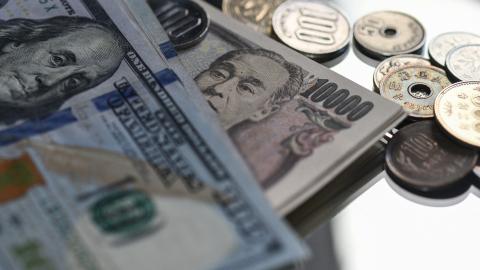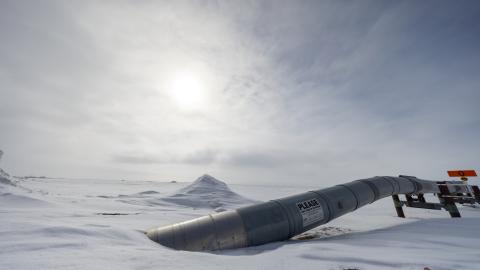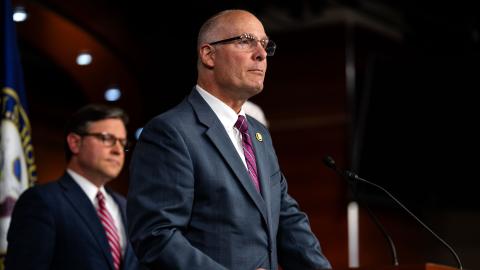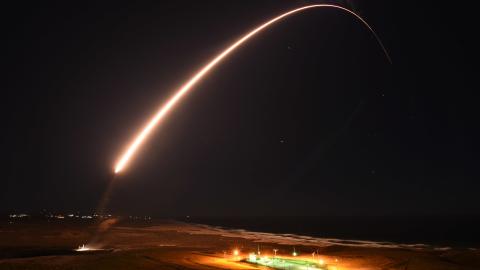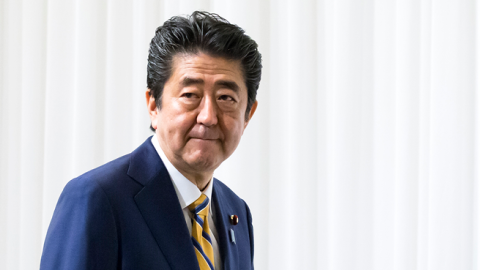In April 2019, China will organise a second forum to discuss the Belt and Road Initiative (BRI), President Xi Jinping’s large-scale infrastructure investment plan in the Indo-Pacific region. In the lead-up to this event, the discussion about China’s ambitions has been heating up in Japan. Despite its emphasis on China’s potential threat, Japan has expressed conditional cooperation with the BRI and is seeking a visit from President Xi by the end of this year. With escalating US-China tensions, which were clearly apparent during US Vice President Mike Pence's remarks on the administration's policy toward China at the Hudson Institute on 4 October 2018, is cooperation with China the best policy for Japan?
When current Japanese Prime Minister Shinzo Abe was sworn in, his policy was firmly against China. Just two days before he was sworn in 2012, he published an article entitled, ‘Asia’s Democratic Security Diamond’ and laid out his idea to form a Japan-US-India-Australia security coalition with the UK and France to tackle “China’s naval and territorial expansion.” After Abe was sworn in as Prime Minister, Japan strengthened security cooperation with the US, India, Australia, UK, France, Vietnam, and other countries around China.
Japan has also started to use infrastructure projects to counter China’s rising influence. For example, just after China proposed the construction and financing of a deep sea port project on Sonadia Island in Bangladesh, Japan proposed its own port project in Matarbari, just 25 kilometres away. In the end, Bangladesh cancelled the Sonadia project in 2016 and chose Japan’s port project instead. After China published its ‘One Belt One Road’ initiative (which it later renamed ‘Belt and Road Initiative’) in 2014, Japan announced its ‘Free and Open Indo-Pacific Strategy’ in 2016. As a result of Japan’s initiative, the US also started to use this terminology in 2017. And India and Australia are cooperating with Japan on many infrastructure projects.
However, Japan’s oppositional attitude toward China was later relaxed. In June 2017, Abe announced that Japan would cooperate with the BRI under certain conditions. And in October 2018, Abe said that he wanted to shift Japan-China relations “from competition to cooperation.” Japan has started to use the phrase ‘Free and Open Indo-Pacific Vision’ instead of ‘Free and Open Indo-Pacific Strategy’ because ‘strategy’ has a military connotation.
On 26 March of this year, Abe listed four conditions for Japan’s cooperation with the BRI, including repayable debt, transparency, openness, and contribution toward the regional economy. And indeed, some projects have already involved Japan-China collaborations. For example, in the Colombo-Kandy road project in Sri Lanka, Sri Lanka borrowed money from China for the first stage of construction, but the third stage will be financed with loans from Japan.
Changing strategy
Has Japan changed its strategy? It is interesting that Japan has been struggling to resist China’s maritime expansion even though Abe declared Japan-China relations to be back on their “normal track” in September 2018. For example, that same month, the Japanese Government reported that their submarine crossed the South China Sea and called at a port in Vietnam, despite China’s dislike of foreign submarine presence in that area.
In December 2018, Japan decided to ban the Chinese telecommunication companies Huawei and ZTE from governmental procurement. In addition, because a Japan-Burkina Faso joint statement mentioned the issue of tension in the East China Sea and South China Sea, China criticized Japan on 25 March. Therefore, it is obvious that the Japan-China confrontation has not ended. What does Japan really want to do? It seems clear that Japan’s purpose has not changed, but its approach has changed a little. Japan believes the Indo-Pacific should not be a China-dominated region.
But other regional countries that have received or are eager to receive BRI investments from China have weighed in. Knowing that these countries have a strong desire to develop their economies with sound infrastructure projects, Japan has taken their views into account and cooperated with China as a case-by-case ‘inspector’ of the projects. At the same time, Japan has not ended its confrontational approach to stop Chinese expansion. That is the reason that Japan’s cooperation with the US, India, Australia, Vietnam, Sri Lanka, and others has been strengthened. Simply said, Japan-China relations have not changed from confrontation to cooperation, but in some strategic instances, Japan is cooperating with China as part of an approach to check Beijing’s power.
